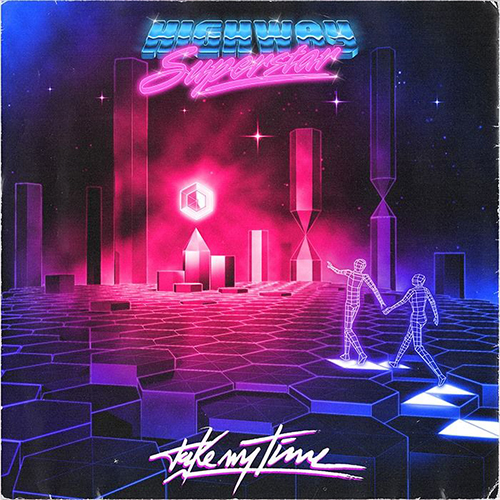Last year, I began reading Herman Melville’s Moby Dick. At first, I was swept away by Ishmael’s beautiful descriptions of his passion for the sea. But I grew increasingly uncomfortable in chapter two, when Ishmael accidentally stumbles into a Black, presumably Christian, worship service.
He shockingly describes the gathering as a “great Black Parliament sitting in Tophet” (another name for hell) and the preacher as “a black Angel of Doom.” In the next chapter, we meet the Native American character Queequeg, whose first words are “Who-e debel you? … you no speak-e, dam-me, I kill-e,” before he is promptly labeled as a cannibal.
What do we do with racist passages in classic books like this—especially as readers of color?
As a lifelong lover of books, I heartily applaud that many Christians seem to have a vested interest in preserving and championing classic Western literature.
In On Reading Well and various articles, Karen Swallow Prior writes about how good books can help cultivate our virtues. Similarly, Jessica Hooten Wilson has said that books help us to be holier. They can sharpen our worldview and help us develop empathy. Reading good books can, as Philip Ryken writes, sanctify our imaginations and nourish our love for beauty; it can even help us be more effective teachers, preachers, and leaders.
As a nonwhite Christian, however, I find that most discussions of reading classic Western literature today either fail to acknowledge or only tangentially mention two difficult truths.
First, even if a book is not overtly racist, readers of color must inevitably reckon with the hostility, condescension, and suspicion toward people of other races that permeated the historic periods in which much of these classic authors lived.
Melville and Dickens, Brontë and Byron, Twain and Tolkien were all embedded in cultures that subjugated entire continents of people to slavery and imperialism. It is simply not enough to tell a reader of color that these were bygone times, for we know better than anyone else that racism still exists today.
The second truth about much of English literature—which is difficult to reconcile with the first—is that it is a part of our Christian past. From Chaucer to Joyce, Christianity is baked into many of the plots, themes, and characters of numerous classic works of the West.
On the one hand, this makes the reading of classics an enlightening tool for believers. Kathleen Nielson writes that “Christians should read classics, because classics tell our story. At the most recognizable level, many Western literary classics tell our Christian story in various ways because they emerge from cultures shaped by Christianity.”
For readers of color, however, the “Christian story” is more problematic.
Aside from the fact that Western literature often ignores the full story of early Christianity’s flourishing in Africa, Asia, and the Middle East, the classics also tell (or do not tell) of periods of slavery and lynching, discrimination and othering, dehumanizing mass incarceration and barred entry, often enacted by those who considered themselves devout believers of the faith.
And although the global face of Christianity has changed drastically since then, for readers of color, the very cultures that deny us are also the historic stewards of the religion that saves us. Thus, classic English literature is at once a dagger and an enigma to me—as well as a beloved passion that plays at my deepest heartstrings.
For example, Emily Dickinson, a devout Christian and a poet I love dearly, writes in “His oriental heresies”: “His oriental heresies / Exhilarate the Bee, / And filling all the Earth and Air / With gay apostasy.” In this poem, her image of what it means to be “oriental” implicates both a heresy and an exhilaration, a kind of thrilling, mildly threatening “apostasy.”
Her views are telling of the times, which often cast Asian women as exotic subhuman beings. In The Making of Asian America, Erika Lee describes how the first-recorded Chinese woman arrived in the United States in 1834, when Dickinson would have been four years old. Nineteen-year-old Afong Moy was kept in a re-created “Chinese Saloon” exhibit for eight hours a day.
Visitors would pay money to watch Moy use chopsticks and marvel at her “national costume” and tiny bound feet. Later, when she grew older, she was sold to a circus before disappearing from history. It is reasonable to assume that many of the visitors to the “Chinese Saloon” exhibit were Christian, given the historical records of the time.
One such record is from Alexis de Tocqueville, who visited the US in the 1830s and remarked, “There is no country in the whole world in which the Christian religion retains a greater influence over the souls of men.”
Of course, classic literature is much more than its racist contexts and passages. But failing to acknowledge the difficult and complicated truths of our past, we can come across as tone-deaf in an increasingly diverse landscape.
If we are to defend the classics, we must also answer the difficult question of why nonwhite readers, particularly Christians, should keep reading them.
In his discussion about the cross of Jesus, Reading While Black author Esau McCaulley asks, “What is God’s first answer to black suffering (and the wider human suffering and the rage that comes alongside it)? It is to enter it alongside us as a friend and redeemer. The answer to black rage is the calming words of the Word made flesh.”
That incarnation touches even the pages of classic Western literature. I believe that through books like these, we can train our eyes to look the past square in the face. We can use our theological imaginations to envision Jesus sitting beside us as we read the great literary works of the past—weeping with us, angry along with us, loving humanity with us.
Before we can examine what this means, we must realize that discussions about classic literature and its racist problem are not new. Many readers today, Christian and non-Christian alike, have thrown out classic works for this very reason.
For example, some have perceived classic children’s literature like Tin Tin in the Congo, Peter Pan, and Little House on the Prairie as “threats to the moral development of youngsters not yet desensitized to the seductions of neocolonialist apologetics.” The solution has been to rename awards, ban books, and discontinue titles, stirring up flurries of controversy.
On the other end of the ideological spectrum, conservative Christians are party to various bills—like those in Wyoming, Oklahoma, and Tennessee—that propose to charge librarians for stocking certain books, prohibit books on topics like sexual identity, and remove books that include nudity or curse words.
Whether they are too “neocolonialist” or, on the other hand, too “woke,” many books are in the hot seat today. An article in The New York Times says that “parents, activists, school board officials, and lawmakers around the country are challenging books at a pace not seen in decades.”
But I would argue that a curious thing happens when thoughtful Christian readers engage with “dangerous” literature, even those written in blood-stained times.
In her essay “Reading Racist Literature” for The New Yorker, Elif Batuman describes the rewarding experience of watching a play called An Octoroon—which is an empowering modern reworking of a racist melodrama from 1859 called The Octoroon. Its problematic name was “a forgotten word once used to describe nonwhite people in the same terms as breeds of livestock.”
Batuman asks a rhetorical question: “What do you do with your mixed feelings toward a text that treats as stage furniture the most grievous and unhealed insult in American history—especially when you belong to the insulted group? … How do you rehabilitate your love for art works based on expired and inhuman social values—and why bother?”
She continues, “It’s easier to just discard the works that look as ungainly to us now as ‘The Octoroon.’ But if you don’t throw out the past, or gloss it over, you can get something like ‘An Octoroon’: a work of joy and exasperation and anger that transmutes historical insult into artistic strength” (emphasis added).
As Batuman writes in another essay when discussing Leo Tolstoy’s Hadji Murat and Anna Karenina, these reworked stories can “reveal different truths from different points in space and time, perhaps even destabilizing the structures it once bolstered.” She continues that it’s almost as though “the meaning of the novel itself could, and would, keep changing.”
In other words, such retellings often have the power to change the classic works themselves.
One excellent example is Jean Rhys’s Wide Sargasso Sea, written from the perspective of Bertha, the woman in the attic of Charlotte Brontë’s Jane Eyre—who is described only through her unhappy husband Rochester’s words as being born in Spanish Town, Jamaica, and having Creole heritage.
In holding a microphone to Bertha’s voice, Rhys, as a colonized woman herself, reshapes the very narrative of Jane Eyre. Wide Sargasso Sea shows that classic literature is not static but alive.
Joseph S. Walker calls Rhys’s retelling a “re-vision” that “changes the nature and possible readings” of the classic work because it “speaks from the margin, and in so doing changes the center.”
Our very act of reading as Christians of color conjures up the dead of history and continues their unfinished conversations. We not only speak from the margins, but we can also change the very center. And in the process, we participate in Jesus’ work—of making all things new, of restoring the dignity of all peoples, and of moving toward true forgiveness.
Readers of color can revise condemnable narratives not only through our retellings but also simply through our reading and our presence.
When I read Jane Eyre in high school and encountered the scene where Rochester puts on blackface, our class’s conversation was transformed simply because my Black classmates were in the room. Their perspectives shaped my reading of the text and shape it still.
We see history, literature, and the world more clearly when nonwhite eyes read the books of the past. Our story as humanity is made more whole when historically colonized and marginalized peoples wade into the streams of classic Western literature with our eyes wide open—because there are some things that only we can see.
In this way, the pages of classics can point more clearly to the Great Story that will someday be told not just in one language by one people but by people from every nation, tribe, and tongue.
The gospel is, after all, a story that is interwoven through all of history. To believe in Jesus Christ is to believe that he can one day redeem even history’s most painful and ugliest parts. We can have hope that the Lord is doing that even now.
Karen Swallow Prior has written that Aristotle considered literature to be a training ground for the emotions. And for Christian readers of color, classic literature becomes another kind of training ground: practice in forgiveness.
For us, this work of forgiveness is not a sentimental exercise. Rather, growing in love for our neighbors through the pages of old books is splintery and, at times, excruciating work—much like carrying a cross.
It is uncomfortable and difficult, and it isn’t for everyone. But for those who can endure it, the pages of great books give us a front-row seat to wrestling with one of the greatest questions of life: What does it mean to love and forgive our enemies?
If we want to know the true story of Christianity, we must remember that Jesus was not fair-haired, white, and English like the Pevensies in C. S. Lewis’s The Chronicles of Narnia. He was a poor, dark-skinned Middle Eastern man, more like the character Shasta in that same work. Jesus spent his life not in the palaces of imperial Rome but in the subjugated slums of Galilee among an occupied people. He lived a life well acquainted with sorrow and rejection.
The same Jesus who is with us in the pages of Melville is with us when a guy at the mall shouts racist obscenities. He is not afraid of our questions. He sees our hurt. And perhaps most importantly, he will not leave things the way they are.
In every racist remark or characterization found in classic literature, the tides turn when we realize that the real Jesus is standing in the margins—quietly suffering alongside readers of color and transforming the very center of the world.
This knowledge changes the way we read.
I cringe whenever people discuss the value of literature in terms of measurable, utilitarian outcomes. Should we read the classics only if they make us more virtuous and effective leaders? Should we support literary works only if studies show that they increase our intelligence or focus?
Many of us love literature most of all because we find it beautiful. In Rembrandt Is in the Wind, Russ Ramsey writes that beautiful words, like beautiful art, take “the pursuit of truth past the accumulation of knowledge to the proclamation and application of truth in the name of caring for others. Beauty draws us deeper into community.”
He continues, “We ache to share the experience of beauty with other people, to look at someone near us and say, ‘Do you hear that? Do you see that? How beautiful!’”
Great literature speaks to us of eternity. It can make us yearn for God and deepen our vision for our current reality. It can open our ears to cultural resonances across history and cultivate in us a humility of time and place.
I am immensely thankful for the authors who forged a path for writers of color today: Toni Morrison, Langston Hughes, and Amy Tan, just to name a few. I encourage my white Christian friends to explore not only these classics but also the vast and growing number of books written by nonwhite writers today, as well as classics in non-Western cultures.
May our reading help us love the real people around us. May we learn to humbly express the words of C. S. Lewis, “My own eyes are not enough for me; I will see through those of others.”
Some literature will not survive the time jump into our modern era. But to embalm every problematic tome in the tombs of the ivory tower would be our loss. If a work of literature is truly a classic, it will break the cycle of injustice by subversively lending itself to our theological imaginations, to our re-visionings, and to our participation in Jesus’ work of making all things new.
Then perhaps these reimagined works of literary art can, in the words of Miroslav Volf, become “a bridge between adversaries instead of a deep and dark ravine that separates them.”
For this to happen, Christian readers of color must stay in the rooms where classic Western literature is being discussed. These books still have something to say—and some of these things can be said only through us.
Sara Kyoungah White is a Korean American writer and editor. She has a BA in English literature from Cornell University and currently serves as the senior editor for the Lausanne Movement.
To unlock this article for your friends, use any of the social share buttons on our site, or simply copy the link below.
To share this article with your friends, use any of the social share buttons on our site, or simply copy the link below.
source














Post comments (0)